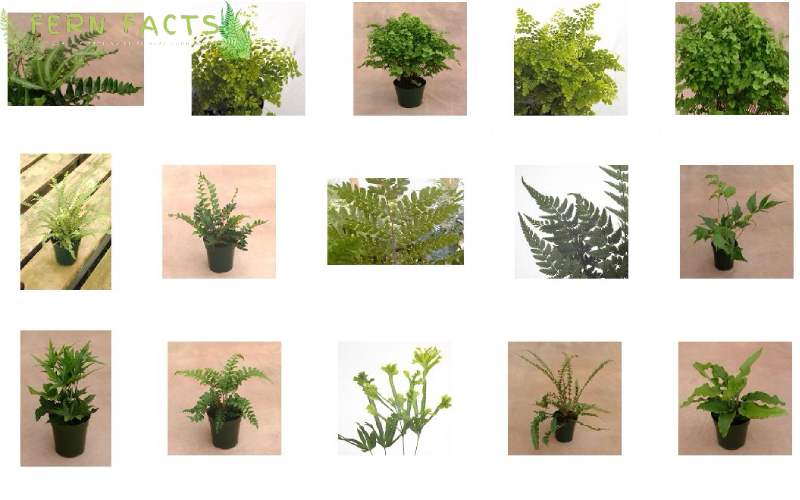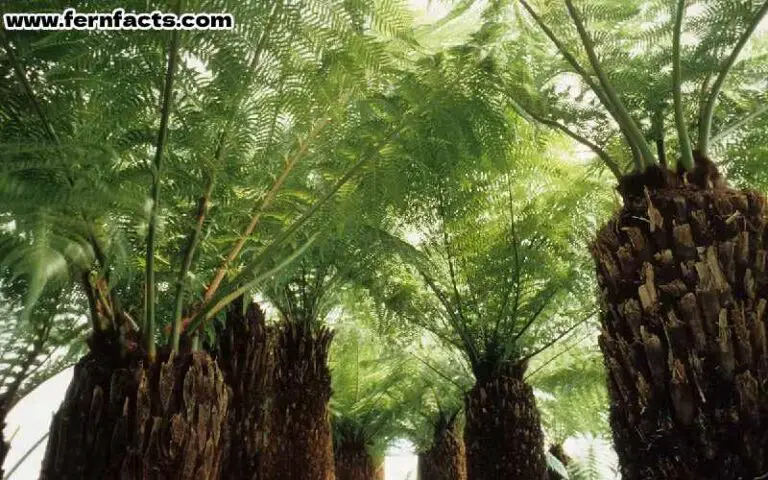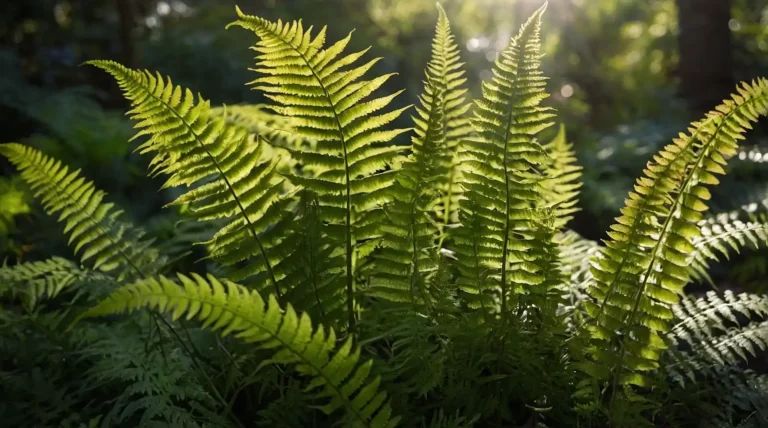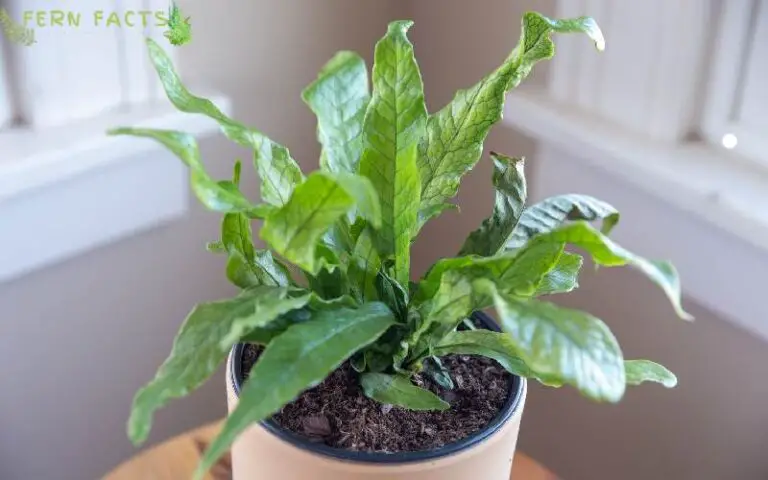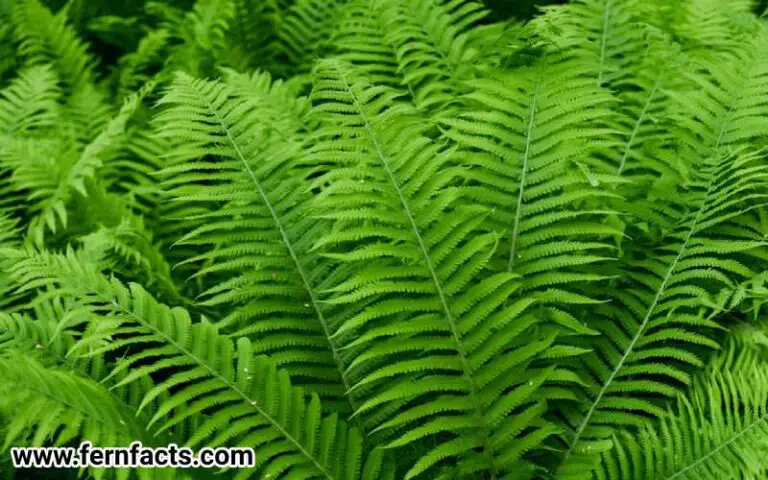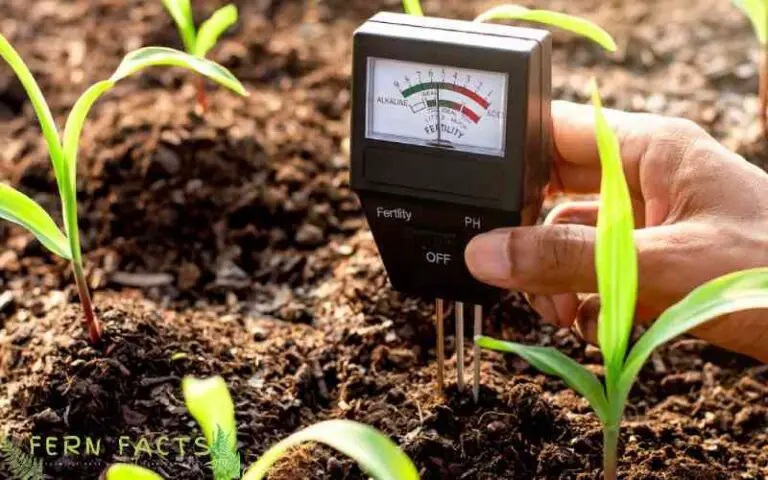Top 15 Common Names of Fern
If you are a ferns lover then you might not want to miss the top 15 common names of ferns. These top 15 ferns which will be mentioned in this article, are the most familiar and frequent to plant by many cultivators and gardeners.
So let’s get started to know these fern’s characteristics, features, and other facts with me.
Top 15 Common Names of Ferns
Since fern are very common plants to have as both indoor and outdoor plants. Here I’ll give you a top 15 list of common names of ferns.
So that you can easily have an abundance of fern names and information in your bucket list. From this list, you can choose which plant you want to plant in your house according to your convenience.
1. Asparagus Fern
- Botanical name: Asparagus setaceus
- Plants: evergreen perennial
- Native range: Southern Africa
- Native habitats: subtropical areas like rainfall
- Shade requirements: partial, fully shaded, bright place
- Height: around 3 feet tall and 4 feet wide
- Soil: slightly acidic (6.5 – 6.8), well-drained system
Asparagus ferns are the most commonly named fern varieties in the plant world. These ferns have the bright green textured foliage with different varieties.
Also, they produce small, tiny flowers which generally bloom through berries. These berries are as not edible as they are toxic to humans and animals, especially dogs and cats.
These ferns are quite invasive because of their spreading characteristics. That’s why they tend to use as many garden fillers which have a positive economic growth in the world.
2. Autumn Fern
- Botanic name: Dryopteris erythrosora
- Common names: Japanese shield fern, autumn fern, wood fern, copper shield fern
- Plant: herbaceous perennial
- Native range: east Asia
- Height: around 18 to 24 inches
- Shade: partial to full shade
- Soil: clay, chalk, sand, well-drained, moist
- Hardiness zone: 5,6,7,8,9
Autumn fern is another commonly known ferns because of their seasonal and colorful foliage transformation.
Because of its seasonal changes, these ferns will appear in different colors in different seasons. These fern fronds are funnel-shaped and the top one has a leathery shine on it.
Ultimately, in the spring season, this fern’s fronds have bright coppery red or orangish red color. Gradually the seasons change, and their fronds transform from bright glossy green color to dark green.
Thus, these unique color transformations make them one of the popular and common varieties of fern species.
3. Austral Gem Fern
- Botanical name: Asplenium dimorphism
- Common names: Austral Gem Fern, mother ferns
- Plants: evergreen plants
- Native Region: Australia
- Shade requirements: partial or full shade
- Height: around 18 inches
- Soil pH: acidic and neutral
- Hardiness: 9, 10, 11
The Austral Gem ferns are native Australian ferns that are famous for their greenery, foliage, and texture.
They are also known as motherferns in many regional countries. Further, it has the ability to tolerate periods of drought as the thick green foliage holds moisture for a longer period.
Hereby, it’s one of the effortless plants to grow If you don’t have plenty of time to take care of your plant.
4. Boston Fern
- Botanical name: Nephrolepis exaltata
- Plants: Evergreen
- Native range: America
- Native habitats: moist shady locations like humid forests, swamps, and floodplains
- Shade requirements: partial shade or full shade
- Height: 20 to 98 inches
- Soil: acidic or neutral (6.0 to 6.5); moist well drained
Boston Ferns are also very renowned indoor ferns to grow. These ferns are also known as sword ferns blue bell Ferns, tuber ladder Ferns, or fishbone Ferns in many countries.
Their medium height is around 40 to 60 cm, however, they can grow up to 1.5 m in extreme cases. They are fond of moist shady places for their natural habitats.
Their soil can also tolerate drought however you need to mist these plants because they enjoy an abundance of humidity around themselves.
5. Bird’s Nest Ferns
- Botanical name: Asplenium nidus
- Plants: evergreen
- Native range: Eastern Australia, Southeastern Asia, India, eastern Africa etc.
- Shade requirements: partial to full shade
- Height: around 1 m
- Soil: alkaline/neutral; moist, well-drained
Bird’s nest ferns are also evergreen ferns which are commonly familiar in the fern category. Their fronds are almost similar to banana leaves.
These plants are very common in southeastern Asia, eastern Australia, Hawaii, India, and eastern Africa. Since they are evergreen ferns, they will have their fronds almost every year.
Therefore, it is one of the primary choices for many plant lovers to decorate their houses with this fern.
6. Christmas Fern
- Botanical name: Polystichum acrostichoides
- Plants: Evergreen
- Native range: North America
- Shade requirements: Full or partial shade
- Height: mostly 2 feet
- Soil: neutral or alkaline and moist, well-drained
- Hardiness zone: 3,4,5,6,7,8,9
Christmas ferns are evergreen plants that have beautiful leathery glossy, green fronds over the year. Generally, these ferns grow best under shady habitats like woodlands, rocky slopes, and stream banks.
They can give the best shelter to wild birds in your garden by their bushy foliage appearance. Hence, you can get some amazing wild birds visiting your mini home garden.
Prominently, these Christmas ferns are very good barriers to soil erosion mostly in flooding areas. Because of their plenty of economic benefits, these ferns are also very common ferns to grow for many cultivators.
7. Cinnamon Fern
- Botanic name: Osmundastrum Cinnamomum
- Natural range: America, Asia
- Natural habitat: bogs, moist woodlands, swamps
- Plant: Perennial
- Soil: acidic soil, clay, sand, well-drained, moist
- Light: full to partial shade
- Height: around 1 to 3 ft
- USDA Zone: 3-9
Cinnamon ferns are known for their bright green, soft, foliage texture. Because of such characteristics, these ferns are also one of the common ferns for cultivators.
Mostly, these ferns are native to America and eastern Asia along their natural habitats are woodlands, bogs, and swamps. Its species existed on Earth for more than 70 million years.
This automatically makes these ferns one of the oldest ferns existing on the earth. These Cinnamon ferns have also been used by First Nation tribes as a food source.
And so, these ferns also contribute to medical purposes like cold remedies, gynecological issues, and snake bites as well.
8. Deer Fern
- Botanical name: Struthiopteris spicant or Blechnum spicant
- Common name: hard fern, deer fern
- Plants: Evergreen plant
- Native range: Pacific Northwest
- Native habitats: Woodlands, grasslands, mountains, hillsides etc.
- Shade requirements: full or partial
- Height: around 45 to 60 cm
- Soil: acidic, neutral, moist well-drained
- Hardiness: 5,6,7,8
Deer ferns or hard ferns are the most commonly known ferns in the fern genre. These are evergreen ferns that are visible to Pacific Northwest states including Europe, western Asia, Northern Africa, and western North America.
These deer ferns have unique two types of leaves: sterile leaves and fertile leaves. Sterile leaves are evergreen ferns and are more likely to form flat Wavy margins by distributing 5-8 mm wide.
On the contrary, fertile fronds are deciduous and much narrower than the sterile ones.
9. Hart’s Tongue Fern
- Botanical name: Asplenium scolopendrium
- Plants: Evergreen
- Native range: Northern hemisphere
- Native habitats: moist soil, damp crevices
- Shade requirements: partial to full shade
- Height: around 0.5 m
- Soil: alkaline or neutral; moist well- drained
Hart’s tongue ferns are also another commonly known evergreen ferns that are widely distributed in the northern hemisphere. These ferns have the most unusual simple, strap-shaped undivided fronds. Their fronds resemble the tongue of a Hart (male red deer).
Additionally, these Hart’s tongue ferns also get the Royal Horticultural Society Award of Garden Merit. However, these American Native plants have a reputation for difficult cultivation due to ideal environment requirements.
Still, these ferns have also been used as medicine plants to cure many diseases.
10. Giant Chain Fern
- Botanic name: Woodwardia fimbriata
- Plant type: perennial
- Native range: North America
- Light: partial sun, shaded place
- Soil: moist, well-drained; acidic ( 5 to 7)
- Hardy Zone: 8,9,10
Giant Chain ferns are one of the largest ferns in the Northern American region. In Washington state, these ferns are identified as Chain ferns which are a rare species because it’s very sensitive.
Over a period of time, this fern tends to become more vulnerable in the state because of its sensitive characteristics. In normal garden land, these ferns can grow up to 5 ft tall with soft green foliage.
11. Japanese Painted Fern
- Botanic name: Athyrium niponicum
- Native range: Eastern Asia
- Plant type: deciduous perennial
- Size: around 1-3 ft tall, 1-2 ft wide
- light: bright and indirect sunlight or partial sunlight
- Soil: neutral acidic, alkaline, moist well drained
- USDA zone: 4,5,6,7,8,9
Japanese-painted ferns are known for their silver foliage fronds which give unique coloration in the garden. Similar to their name, these ferns hold unique coloration that revolves around purple, silver, and burgundy. These ferns are mostly local to eastern Asia.
Usually, the fronds of these ferns have variable colored foliage like white, frosty white, or burgundy. Because of such unique coloration and characteristics, it’s also become one of the common ferns to grow outdoors and pots.
12. Leatherleaf Ferns
- Botanical name: Rumohra adiantiformis
- Plants: evergreen
- Native range: Southern hemispheres
- Shade requirements: partial to full shade
- Height: around 1 to 3 ft
- Soil: acidic, neutral pH, well-draining
- Hardiness zone: 8,9,10,11
Leatherleaf ferns are Southern Hemisphere plants that are widely native to those southern areas. These ferns grasp such dark green glossy fronds which have got bushy tufted appearance during their mature period. These plants are famous plants for indoor and outdoor decoration because of their glossy leathery shine which portrays the garden’s mesmerizing view. Similarly, these Leatherleaf ferns are best for your ground cover, woodland gardens, or any shade gardens. Because of these unique characteristics, these ferns have also become the most common ferns for cultivators.
13. Maidenhair Ferns
- Botanical name: Adiantum raddianum
- Plants: evergreen
- Native range: South America
- Native habitats: forest, flocks, rivers banks, coastal cliffs, trains and streams
- Shade requirements: partial shade
- Height: up to 0.5 m
- Soil: neutral, alkaline, moist, well-drained
Maidenhair ferns are well-recognized as indoor growing plants for many gardeners. Their tiny oval or round-shaped fronds are the best to keep as indoor plants. Similarly, their seasonal colorful growth will also enhance room environments which will give refreshments. Thus, these ferns remain one of the popular varieties of ferns that are frequently grown.
14. Staghorn ferns
- Botanic name: Platycerium bifurcatum
- Plant: Perennial evergreen
- Native range: Java, New Guinea, Eastern Australia, South Wales, Queensland
- Height: around 35 inches
- Shade: Partial
- Soil: acidic, neutral
- Hardiness zone: 9,10,11,12
Staghorn Ferns basically look like deer or elk antlers with heart-shaped arching fronds. Usually, these ferns are native to Asia and Australia. Including this country, they are also known in Java, New Guinea, South Wales, Queensland, and Lord Howe Island. More than 17 variations of these species currently exist in Asia and Australia. Therefore, these ferns are very frequently grown and planted for home cultivation. These ferns also can be used for many home decoration purposes both indoors and outdoors.
15. Soft Shield Fern
- Botanical name: Polystichum setiferum
- Plants: Evergreen or Semi-evergreen plant
- Native range: Southern and western Europe
- Shade: full or partial
- Height: around 2 to 3 m
- Soil: sand, loam, acidic, neutral, moist and well-drained
- Hardiness: 4,5,6,7,8
Soft Shield ferns are commonly grown ferns that are widely distributed in Southern and Western countries. These ferns hold beautiful bright green textured, bipinnate fronds that are normally facing downwards. More than 200 species exist on the earth. Moreover, they are also decorative plants which is why these ferns are being cultivated by the gardeners. Thus, they are also contributing to the economic growth of the world.
Wrap up
To conclude, ferns are very popular indoor and outdoor decorative plants for every plant enthusiast. Because of their growing tendency, they are very easy and well-adaptable to the environment. The above-mentioned ferns are one of the most topped and common name ferns which are significantly familiar to every gardener. Thus, if you want to grow these ferns at home, you can take an idea about their characteristics, features, and glowing tendencies along with making them thrive.

